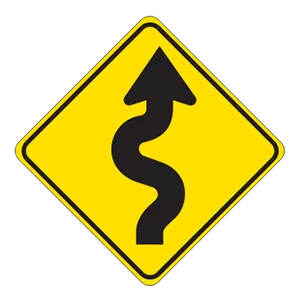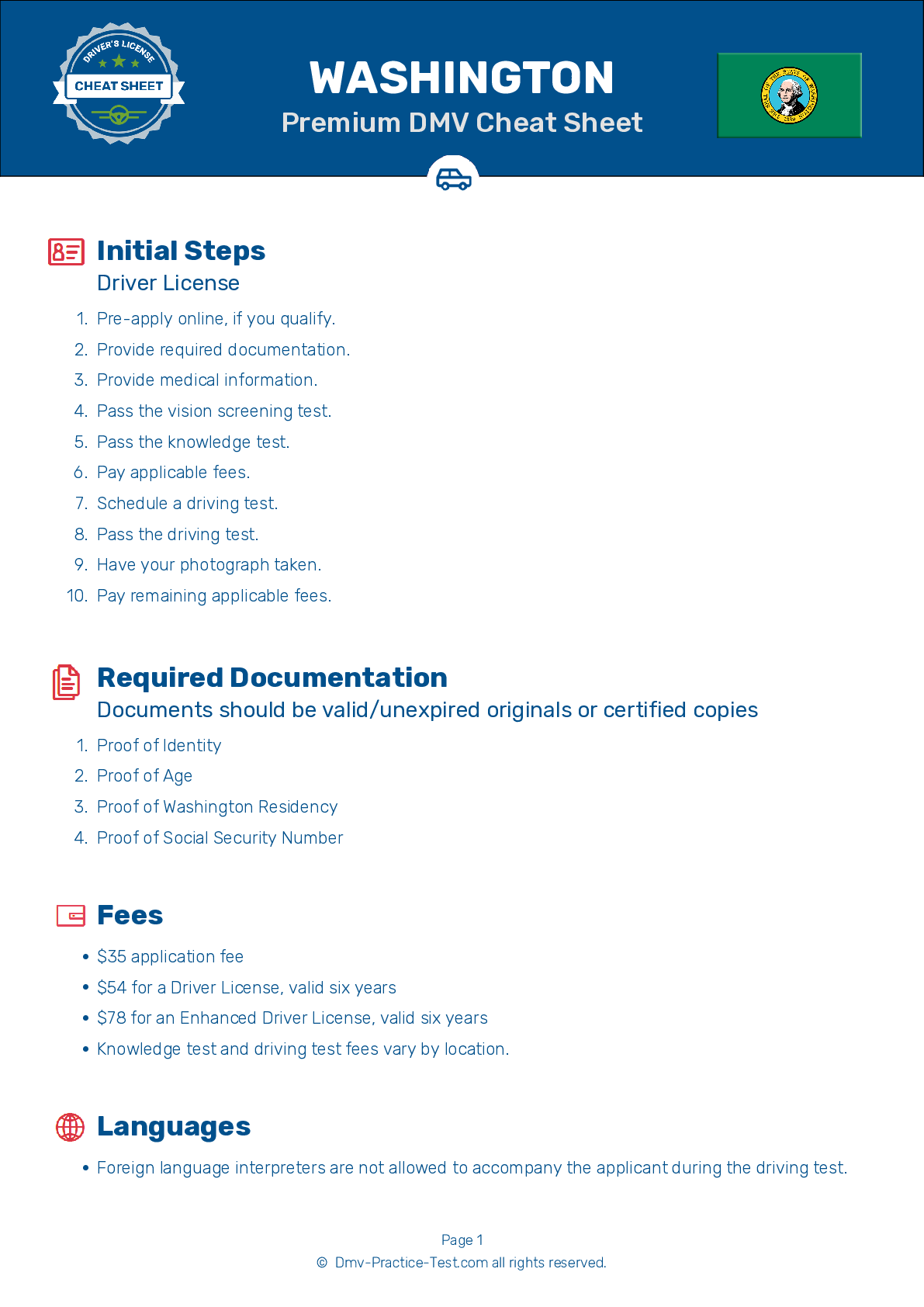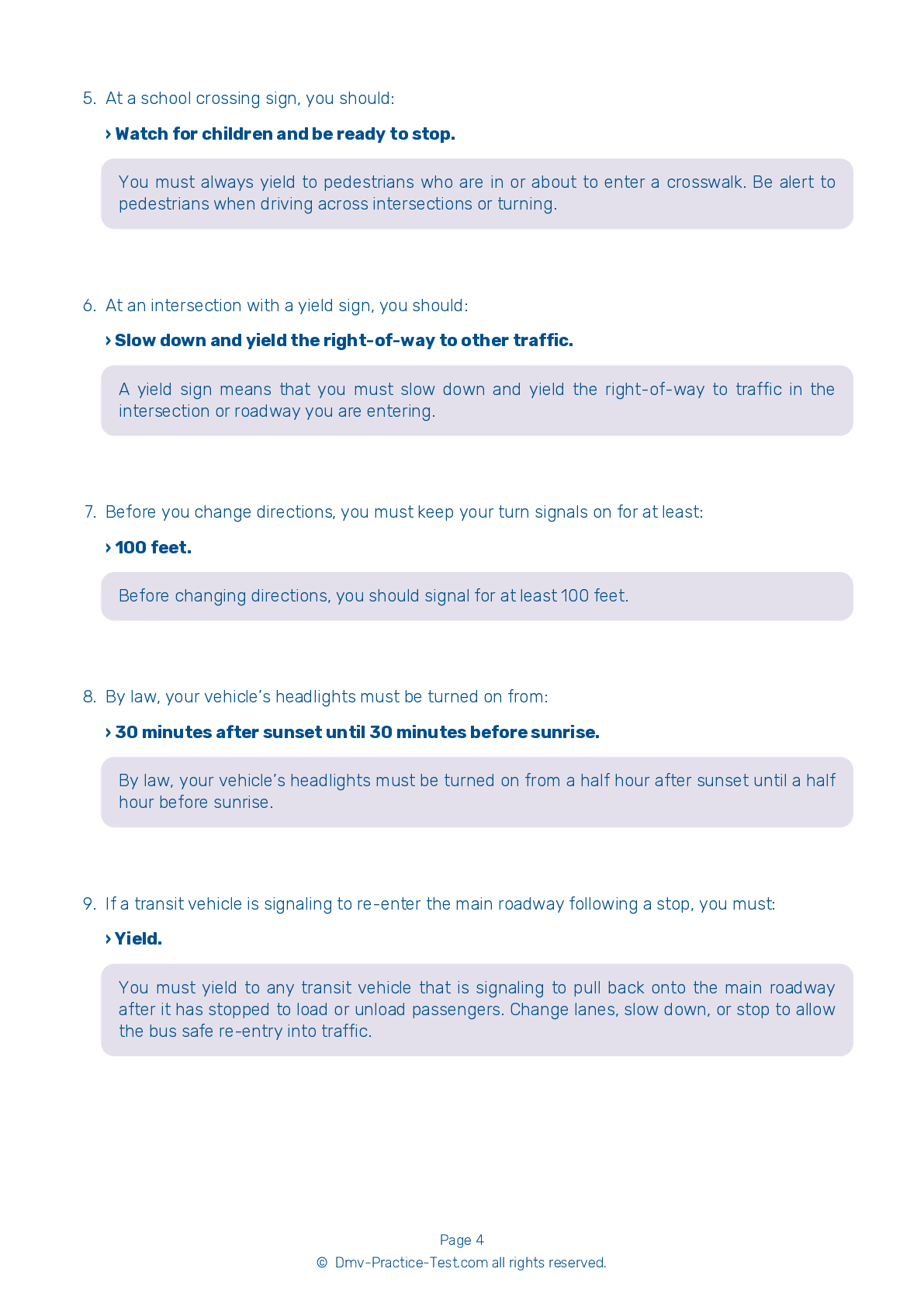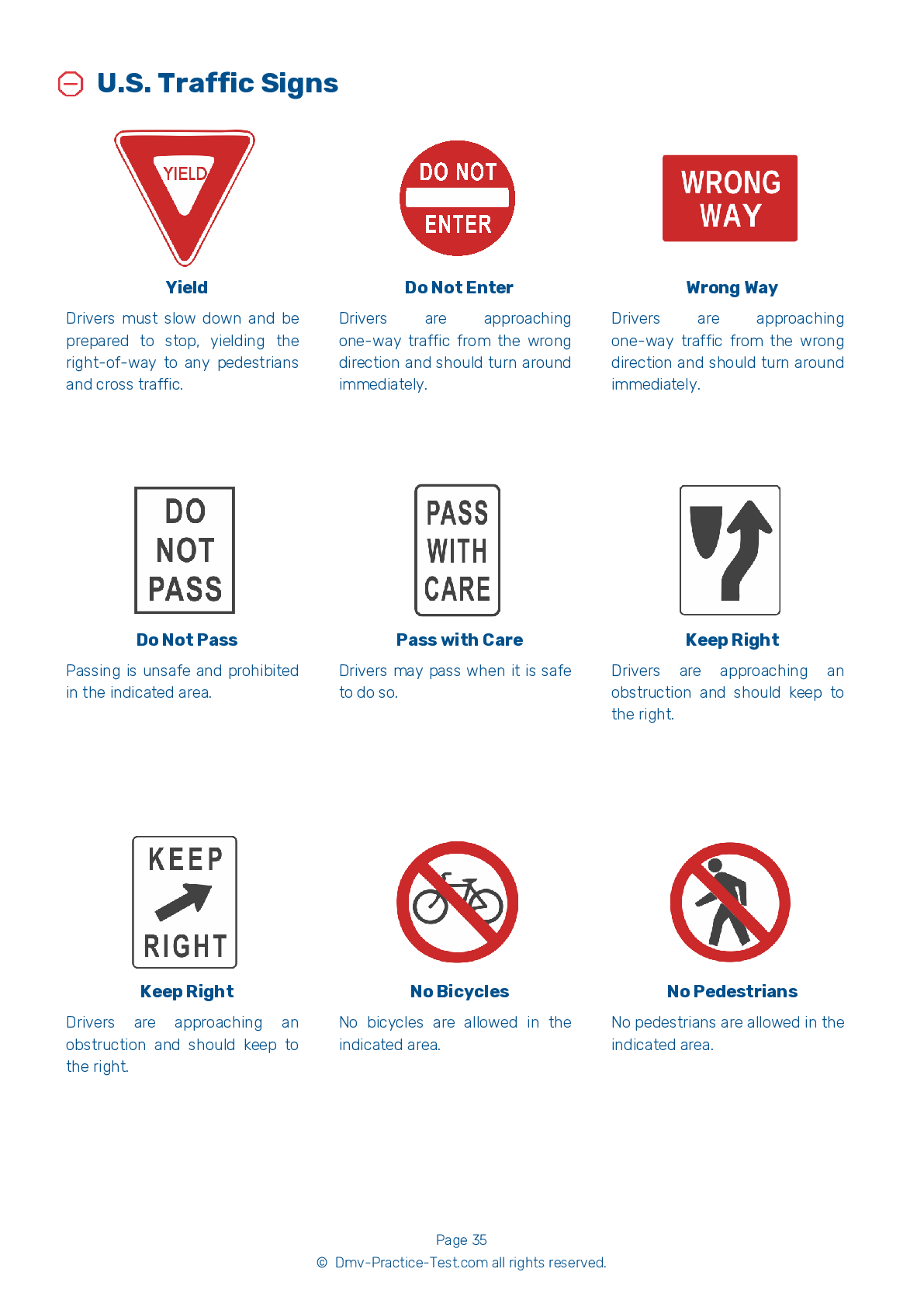FREE Washington DMV Practice Test #6 Page 3 of 4
The Washington DMV practise examinations have been updated for January 2026. It includes questions based on the Washington Driver Handbook's most significant traffic signals and legislation for 2026. Use actual questions that are very similar (often identical!) to the DMV driving permit test and driver's licence exam to study for the DMV driving permit test and driver's licence exam.
On the practise exam, each question gets a tip and explanation to help you remember the concepts. The written component of the official Washington DMV test will feature questions about traffic rules, traffic signs, and driving statutes, as well as knowledge from the Driver Handbook.
To obtain a passing grade, you must correctly answer 20 of the 25 questions. Use the practise exam provided by the Washington Department of Motor Vehicles to help you prepare for your instruction permit or driver's licence.
The DMV exam is available in several languages.
Using any kind of testing assistance will result in an automatic fail, and the DMV may take additional action against your driver's licence, so stay away from it.
13 . Your blind spot is the area of the road:
Blind spots are areas that a driver cannot see without moving their head. They can be located to the sides of and behind a vehicle.
14 . This sign means:

Warning signs prepare drivers for upcoming road conditions and hazards and are usually yellow with black markings. This sign warns drivers that they are approaching a winding road and that they should adjust their speed accordingly.
15 . At an intersection with a roundabout island (traffic circle):
Inside a roundabout, you must always drive around the circle to the right. When entering a roundabout, you must yield to traffic that is already in the circle, as well as to pedestrians and bicyclists who are crossing the road.
16 . What happens if you drink alcohol while taking prescription or over-the-counter medicine?
Consuming alcohol and other drugs together can increase the impairing effects of both. For example, having one drink while you are also using a cold remedy could affect you as much as several drinks would when being consumed separately from any medications.
17 . You are driving in the left lane and want to move into the right lane. You should:
When changing lanes, you should check your vehicle's blind spots by looking over your shoulder in the direction that you want to move. Always check your mirrors and turn on your directional signal before beginning a lane change.
18 . A driver should be extra alert to motorcyclists, bicyclists, and pedestrians because:
In many collisions with motorcycles, bicycles, and pedestrians, drivers reported that they were looking but still did not see the smaller vehicle or pedestrian. These can be more difficult to spot in traffic than passenger vehicles because they are smaller, may move faster, and have less noticeable lighting. To prevent collisions with these smaller and less protected road users, drivers should always be alert to the presence of motorcycles, bikes, and pedestrians.
2026 Washington | Frequently Asked Questions
1. Complete a driver education course if you're under 15 ½.
2. Visit a driver licensing office.
3. Provide proof of identity, Social Security number, and residence.
4. Pass the knowledge test.
5. Pay the required fee.
6. If you're under 18, a parent or guardian must sign the application.
Remember, with a permit, you must always have an adult 21 years or older in the car with you.
1. Not checking mirrors and blind spots.
2. Incorrect signaling or forgetting to signal.
3. Lack of steering control.
4. Improper lane positioning and changing.
5. Not following traffic signs or signals.
6. Inadequate observation at intersections.
7. Speeding or driving too slowly.
8. Failing to yield the right of way where necessary.
Remember, practice is key to overcoming these errors.



